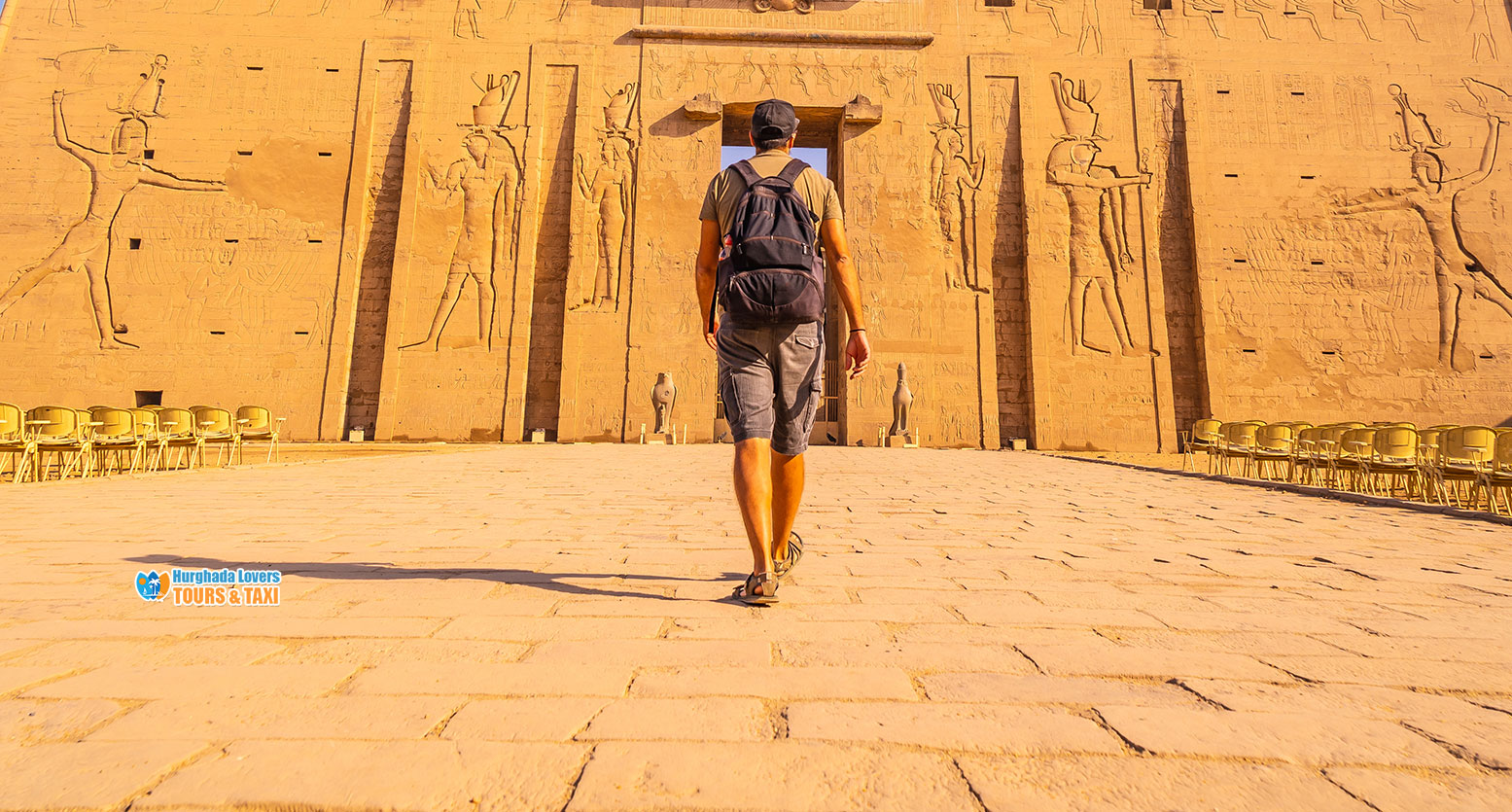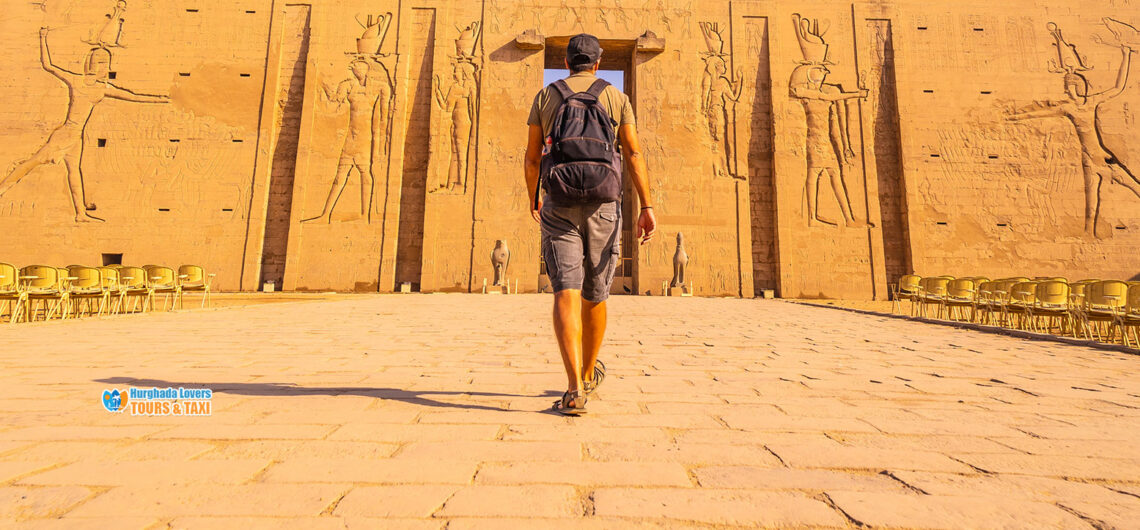Pharaonic Village – Places to Visit in Cairo, Egypt
Facts about the establishment of the most beautiful tourist attractions in Cairo to see how the lives of the Ancient Egypt were in the ancient Egyptian civilization using actors wearing ancient Egyptian costumes and Clothing in ancient Egypt and discovering the history of the Pharaonic civilization and how much is the entrance ticket, what is inside and more about Ancient Egypt History.
The Pharaonic Village is a village that includes features of the Pharaonic life, the Egyptian Pharaohs kings and the queens of Pharaonic Egypt “Female Pharaohs“, using actors wearing ancient Egyptian costumes.
There is a group of Pharaonic Egyptian Monuments. Learn about what the Pharaonic Village contains, who founded it, and other information about the village below..
Pharaonic Village Facts
The idea of the Pharaonic Village goes back to Dr. Hassan Ragab. Dr. Hassan’s goal and vision was to create a living museum that includes aspects of Social Structure in Ancient Egypt.
In 1974, the doctor began transforming an island called “Jacob” into a model very close to the life of the ancient Egyptians..
The doctor relied on a set of steps while working in that village, and the first step was Agriculture in Ancient Egypt.
The doctor planted nearly 5,000 trees to form a natural barrier to the modern appearance of Cairo outside, instead of using a modern wall..
Specific tree species were chosen, including sycamore, palm and willow trees..
The next step was to create the noble house along with its accessories such as the garden, the market and also to cultivate a large field..
The village contains a boat workshop as well as roads made of huge white stone for discovering Ancient Egyptian Metallurgy.
The village was opened in 1984 and cost approximately six million dollars..
Dr. Abdul Salam joined the village administration in 1989, which was then in a development phase..
Inside
Upon entering the village you will find a reception float containing a small cafeteria..
On the upper floor of the float is the Queen Cleopatra VII Museum..
In the Pharaonic Village there is a tour guide who will explain to you information about Cleopatra and Julius Caesar, and the events that took place in that era..
The trip begins after finishing viewing the Cleopatra Museum by riding the floating boat..
The boat takes visitors to the water channels surrounding the Pharaonic village, and there is a guide who explains to you the ancient Egyptian deities – Ancient Egyptian gods and Goddesses as in the Ancient Egyptian religion, as well as a scene about the Prophet Moses..
The guide also explains general information about the papyrus plant and the method of manufacturing Ancient Egyptian Papyrus, in addition to explaining the methods of mummification among the ancient Egyptians “Mummification in ancient Egypt” and the development of Ancient Egyptian science and Medicine in ancient Egypt and how pottery and glass were made in ancient times to discover the extent of the development of Industry in ancient Egypt.
Other information you can learn after visiting the village is information about the methods of agriculture, irrigation and fishing in ancient Egypt..
An overview of Ancient Egyptian Language hieroglyphic writing is also provided, and information is presented through thematic scenes..
Pharaonic Village Museums
The museums in the Pharaonic Village are not museums of ancient Pharaonic Egypt, but rather museums of modern Egypt..
There is a Ptolemaic Kingdom museum, in addition to a museum of Pharaonic Egyptian heritage, as well as a museum of beliefs and a museum of boats..
The Islamic Museum is one of the museums located in the Pharaonic Village next to the Museum of President Mohamed Naguib, the first president of the Arab Republic of Egypt..
There is the Gamal Abdel Nasser and Muhammad Anwar el-Sadat Museum, in addition to the Coptic Egyptian Antiquities Museum and The Pyramids of Giza Museum..
The Mummification Museum and the Museum of Modern Egypt are among the famous museums inside the village. There are also Mummy of the pharaohs and models of Egyptian clothing throughout the ages and famous battles..
President Gamal Abdel Nasser Museum
Gamal Abdel Nasser Museum was designed to illustrate the life of the late Egyptian President Gamal Abdel Nasser from birth to death..
The museum is located on the banks of the Nile River, and contains more than 150 rare photos of President Gamal Abdel Nasser throughout his life..
The museum also contains old coins and stamps, along with letters from the president dating back to 1941..
Text of the Suez Canal Nationalization Decision of 1956 from the letters in the museum.
Next to the President Gamal Abdel Nasser Museum, there is also a museum for President Mohamed Anwar El Sadat..
The last museum contains the president’s personal belongings, including the naval suit that the president wore to attend the opening of the Suez Canal..
Among the exhibits in the museum are also the president’s perfume, his toothbrush, and the late president’s famous cane..
There are pictures of his wives and children, as well as pictures of the president at various stages of his life and during his ablutions..
Inside the museum there is a model showing how the Bar Lev Line was confronted by the Egyptian armies..
Tutankhamun’s tomb
Tomb of Tutankhamun | KV62 is one of the artificial Egyptian tombs located in the Pharaonic village, named after King Tutankhamun “Eighteenth Dynasty of Egypt, The New Kingdom“..
The tomb is the same size as the original tomb in the Valley of the Kings “Luxor“, as well as the design. There is also a group of artifacts that were with the tomb..
The tomb in the village is divided into 4 rooms, and the first room contains three gold-plated beds, in addition to the king’s food and other belongings..
The second room in the tomb contains pottery, the king’s weapons, and the chess set that the king used..
In the third room there are four compartments, which is the burial chamber in which the bodies were discovered, and in it there is a coffin of pure gold..
Pharaonic Village
The most important tourist attractions in Cairo and Giza, Egypt, to tell us the history of ancient Egyptian civilization, what are the working hours, entry ticket prices, what is inside, and more.
The most important cultural tourist places for Egyptian Pharaonic antiquities in Egypt Tourism, learn about working hours, ticket prices and everything you want to know to make an enjoyable recreational trip to one of the most prominent tourist places that can be visited in the Great Sea, Saqiyat Mekki, Giza Governorate, south of Cairo
During your visit you will have an unparalleled experience. Where you will be in the shadow of the ancient Pharaonic civilization, and feel as if you have traveled through time to a distant past..
About the Pharaonic Village
In the Al-Munib district of Giza Governorate, there is a miniature model of the life of the ancient Pharaohs, from the life of sculptors to the life of farmers to the life of craftsmen and other features of ancient Pharaonic life..
The Pharaonic Village is distinguished by being an open, living museum, displaying various activities of ancient Egyptian life in one place, with Egyptian actors, wearing makeup similar to what the ancient Egyptians were like, which takes you on a journey through history to the distant past..
Places to visit inside the Pharaonic Village
There are many visits, sights and activities that you can do in the Pharaonic Village, such as the Cleopatra Museum, and the Nefertari Yacht, through which you can take an enjoyable Nile cruise, during which you can see the various landmarks of the amazing Pharaonic Village..
In the Pharaonic Village you can also see papyrus plants, which the ancient Egyptians used for writing, a model of Tutankhamun’s tomb, and another of the pyramids, in addition to a number of contemporary and ancient art exhibitions..
It also includes a Coptic Art Museum, a Mummification Museum, a Napoleon Gallery, a Sadat Museum, a Museum of Inventors, and a Museum of Modern History in Egypt..
A model of a peasant house and another displaying scenes of ancient agriculture, the Nubian History Museum that narrates the history and life of the Nubians, the Boat Museum, and the China Museum..
The Pharaonic Village has many restaurants, cafes, and other entertainment and outing places, which makes it the first choice for outings for young men, women, and families alike..
What awaits you inside the Pharaonic Village?
The Pharaonic Village is not a collection of static exhibits, but rather a place full of life, through what it possesses of urban parks for children in Egypt.
And from the boats used for a Nile trip inside the village, headed by Nefertari’s yacht, where one trip takes about an hour, and some light meals are available..
You can also shop in the Pharaonic Village, where there are many souvenir shops, many of which are handcrafted in the village by the same expert craftsmen..
Address: The village is located on the west bank of the Nile, on Jacob’s Island at 3 Bahr El Aazam Street, about six miles from downtown Cairo..
working hours:
The village is open from 9am to 5pm daily.
In the summer months, it stays open until 7pm.
Entrance Fees: Tour fees vary depending on the program you choose.
Address: 3 El Bahr El Aazam, Saqiyat Mekki, Giza, Egypt,
Pharaonic Village Visiting Hours
Daily from 9:00 am to 5:00 pm.
Pharaonic Village Entrance Ticket Price
The ticket price varies depending on the visit program. The ticket price starts from one pound to one Egyptian pound..
Note: Facts and secrets of the history will be added soon…
Hurghada Excursions Lovers, Best Travel Agency in Hurghada to provide daily tours to visit the Tourist attractions of Luxor by Hurghada to Luxor Tours and Hurghada to Pyramids Trips. Book online when you come to Hurghada, El Gouna, Sahl Hashish, Makadi Bay, Soma Bay.

